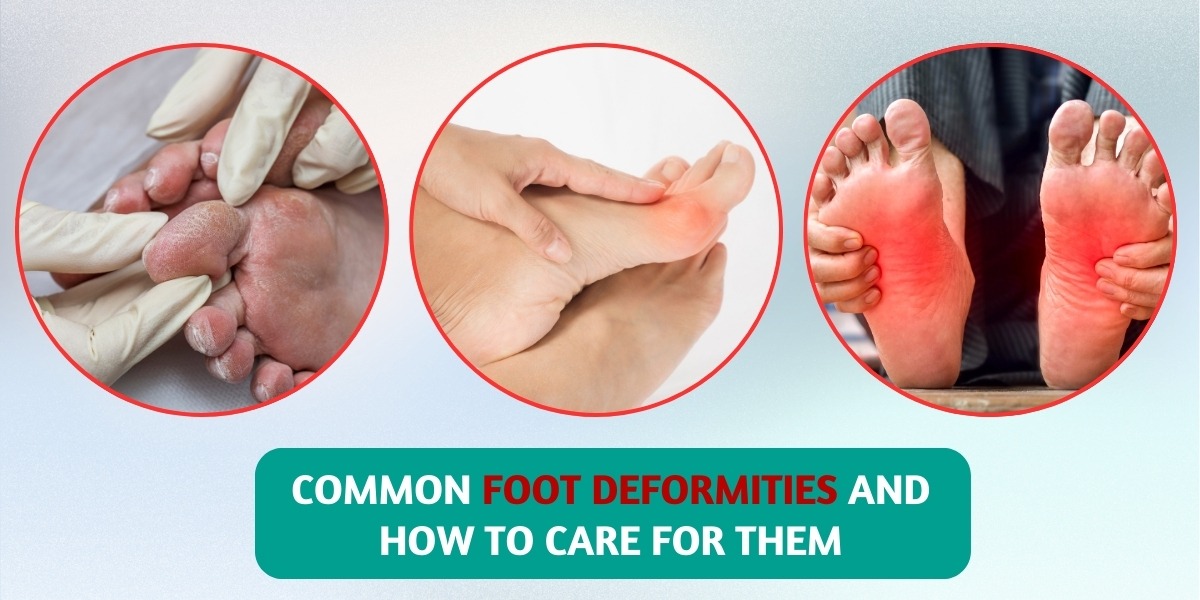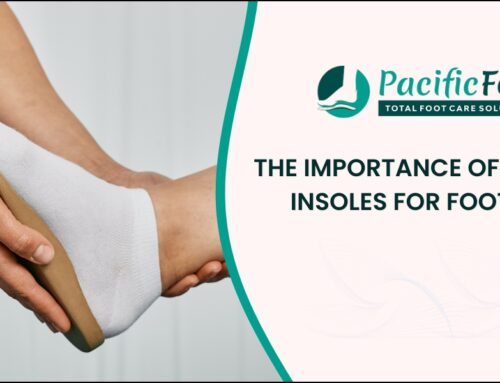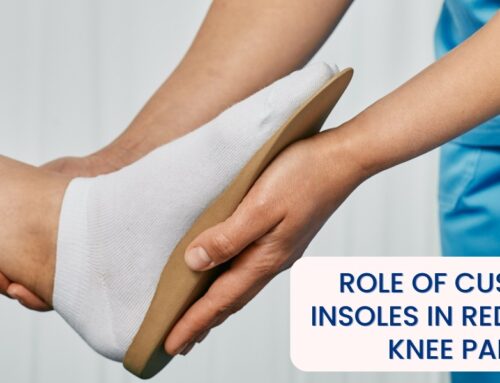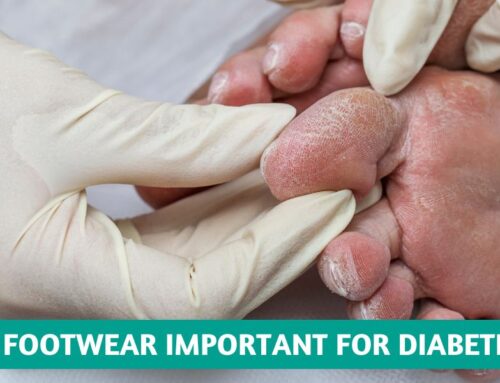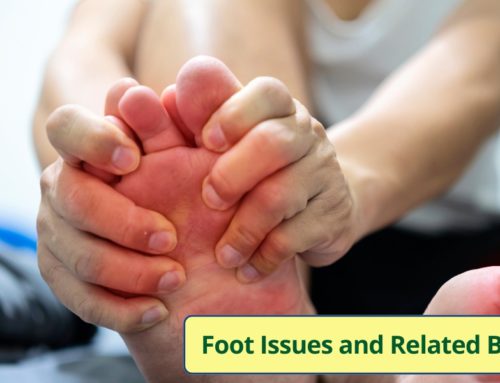Foot deformities are a widespread issue affecting millions of people globally. These conditions can cause discomfort, pain, and mobility problems, significantly impacting quality of life. Understanding the most common foot deformities and how to care for them is crucial for maintaining foot health and preventing complications.
1. Bunions (Hallux Valgus)
What Are Bunions?
A bunion, also known as hallux valgus, is a bony bump that forms on the joint at the base of the big toe. This condition occurs when the big toe pushes against the adjacent toe, forcing the big toe’s joint to stick out and become misaligned.
Symptoms of Bunions
- Swelling, redness, and soreness around the big toe joint.
- There is a visible bump on the outside of the foot.
- Restricted movement of the big toe.
- Pain when walking, particularly when wearing tight shoes.
Causes of Bunions
Bunions develop due to a combination of hereditary structural defects, wearing narrow or tight shoes, and arthritis. Women are more likely to develop bunions, especially those who wear high heels frequently.
Care for Bunions
To care for bunions:
- Wear comfortable shoes: Opt for shoes with a wide toe box and avoid heels higher than two inches.
- Use orthotics: Custom-made shoe inserts can help realign the foot and reduce discomfort.
- Bunion pads: These protective pads can help relieve pressure on the bunion.
- Surgery: In severe cases, a surgical procedure called bunionectomy may be required to correct the deformity.
2. Hammertoes
What Are Hammertoes?
A hammertoe is a deformity that affects the middle joint of the toes, causing the toe to bend downwards like a hammer. This condition can occur in any toe, although it is most common in the second, third, and fourth toes.
Symptoms of Hammertoes
- A toe that appears bent or curled.
- Pain when moving or straightening the toe.
- Corns or calluses on the top of the affected toe due to rubbing against shoes.
Causes of Hammertoes
Hammertoes are often caused by wearing shoes that are too tight or narrow, as well as muscle imbalances. Foot trauma, arthritis, and genetic factors can also contribute to the development of this deformity.
Care for Hammertoes
- Proper footwear: Choose shoes with low heels and sufficient room for the toes.
- Toe exercises: Stretching and strengthening exercises can improve toe flexibility.
- Padding and taping: Special pads and tapes can alleviate pressure on the toe and keep it in a natural position.
- Surgery: Severe cases may require surgical correction, particularly if conservative treatments fail to provide relief.
3. Flat Feet (Pes Planus)
What Are Flat Feet?
Flat feet, also known as pes planus, occur when the arch of the foot collapses, resulting in the entire sole making contact with the ground. This condition can be present from birth or develop over time due to aging or injury.
Symptoms of Flat Feet
- Feet that appear to roll inward while walking.
- Pain in the arch or heel area.
- Swelling along the inside of the ankle.
- Difficulty standing on tiptoe.
Causes of Flat Feet
Flat feet can be caused by genetic factors, injuries, weakened arches, or medical conditions such as arthritis. Overweight individuals are also more likely to develop flat feet due to increased pressure on the arch.
Care for Flat Feet
- Supportive shoes: Use shoes with good arch support and firm soles.
- Orthotic devices: Custom-made orthotics can help correct alignment and relieve pain.
- Physical therapy: Exercises to strengthen the muscles supporting the arch can help alleviate symptoms.
- Surgery: In severe cases, surgery may be necessary to repair tendons and correct the deformity.
4. Claw Toes
What Are Claw Toes?
Claw toe is a condition where the toes bend into a claw-like shape, with the toes curving downward at the middle and end joints. This deformity can occur in any toe and is often accompanied by corns and calluses.
Symptoms of Claw Toes
- Pain and difficulty walking.
- Toes that curl downward or dig into the soles of the feet.
- Corns or calluses form on the tips or tops of the toes.
Causes of Claw Toes
Claw toes can result from nerve damage, muscle imbalances, or wearing shoes that are too tight. People with diabetes, arthritis, or stroke-related muscle damage are particularly prone to this condition.
Care for Claw Toes
- Footwear: Wear shoes with a spacious toe box to avoid cramping the toes.
- Toe exercises: Stretching and strengthening exercises can help maintain flexibility in the toes.
- Splints or tape: These can hold the toes in a proper position and prevent them from curling further.
- Surgery: If non-invasive treatments fail, surgery may be required to release tendons or correct joint deformities.
5. Clubfoot (Talipes Equinovarus)
What Is Clubfoot?
Clubfoot is a congenital condition in which a baby’s foot is twisted out of shape or position. In severe cases, the foot may look like it’s turned upside down. Clubfoot affects the bones, muscles, tendons, and blood vessels in the foot.
Symptoms of Clubfoot
- A foot that appears twisted or turned inward.
- Shortened leg muscles on the affected side.
- Limited movement in the foot and ankle.
- Difficulties with walking if left untreated.
Causes of Clubfoot
The exact cause of clubfoot is unknown, but genetic and environmental factors are believed to play a role. It can occur in families with a history of the condition.
Care for Clubfoot
- Casting: The Ponseti method involves gentle manipulation and casting to gradually move the foot into the correct position.
- Bracing: After casting, the use of braces helps to maintain the corrected position.
- Surgery: In more severe cases, surgery may be necessary to adjust tendons, ligaments, and joints in the foot.
6. High Arches (Pes Cavus)
What Are High Arches?
Pes cavus, or high arches, is a condition where the arch of the foot is excessively elevated. This deformity can cause instability, leading to issues like ankle sprains and foot pain.
Symptoms of High Arches
- Foot pain, particularly in the arch or heel.
- Difficulty finding shoes that fit properly.
- Frequent ankle sprains.
- Calluses on the ball or heel of the foot.
Causes of High Arches
High arches can be caused by hereditary factors, neurological conditions such as cerebral palsy or muscular dystrophy, or injuries. In some cases, the condition is idiopathic, meaning the cause is unknown.
Care for High Arches
- Orthotic supports: Custom arch supports can help distribute weight more evenly.
- Supportive footwear: Shoes with good cushioning and arch support can reduce pain and pressure.
- Foot exercises: Strengthening the muscles around the foot can improve stability and balance.
- Surgery: Severe cases may require surgery to reduce the arch height or realign the foot.
If you are struggling with foot discomfort or dealing with common deformities like bunions, hammertoes, or flat feet, finding the right support is crucial. Visit Pacific Foot Insoles to explore a wide range of custom-made orthotics designed to provide optimal comfort and support.

